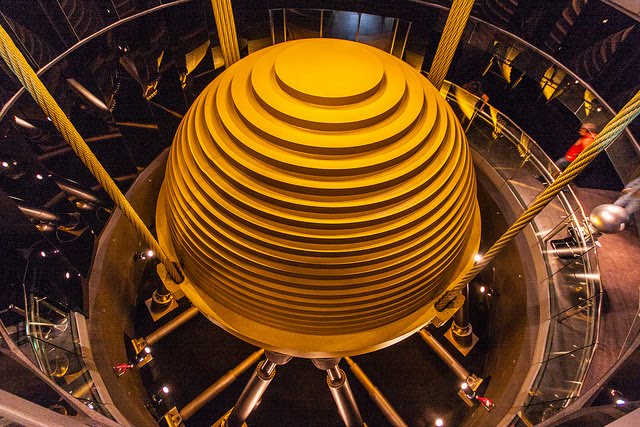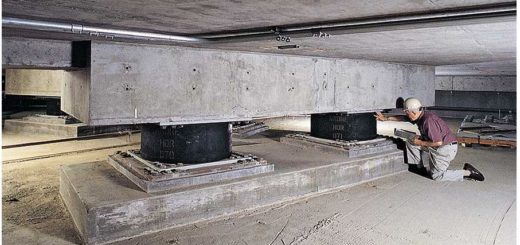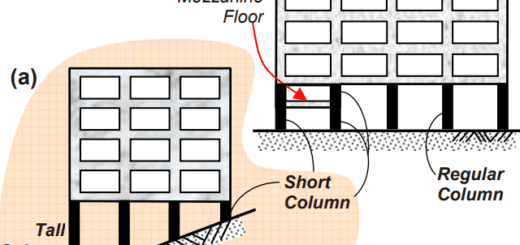Tuned Mass Dampers | Building Protector in Earthquake
Civil engineering is a important field of practice, with a wide range of applications in the design and construction of buildings, bridges, tunnels and other infrastructure. In recent decades, one method of improving the efficiency and resilience of civil engineering projects has been the development and use of tuned mass dampers (TMDs). In this article, we will look at the principles, operation, uses and advantages of TMDs for civil engineers. We will also consider some of the most common methods for tuning TMDs for optimal performance in a range of applications.
What is Tuned Mass Dampers
TMDs are devices that are used to mitigate vibrations in structures. They work by absorbing and dissipating the energy of vibrations, thereby reducing the amplitude of the oscillations. TMDs are often used in buildings and other structures to protect against seismic activity, wind-induced oscillations, and other sources of vibrations.
The common type of Tuned Mass Dampers are
- Pendulum dampers
- Tuned liquid column damper
The most common type of TMD is the pendulum damper, which consists of a large mass (the “pendulum”) suspended from a fixed point on the structure. The pendulum is free to swing back and forth, and the motion of the mass is used to cancel out the vibrations of the structure. Pendulum dampers are typically used in tall buildings to protect against wind-induced oscillations.
Another common type of TMD is the tuned liquid column damper (TLCD). TLCDs consist of a column of liquid (usually water) contained in a cylindrical tank. The column of liquid is free to oscillate back and forth, and the motion of the column is used to cancel out the vibrations of the structure. TLCDs are typically used in bridges and other structures to protect against seismic activity.
TMDs are often used in buildings and other structures to protect against seismic activity, wind-induced oscillations, and other sources of vibrations. In addition, TMDs can also be used to protect against vibrations caused by machinery, vehicles, and other sources of mechanical noise. By absorbing and dissipating the energy of vibrations, TMDs can effectively reduce the level of noise and vibration in a structure.
Advantages of Tuned Mass Dampers
There are a number of advantages that TMDs offer for civil engineers.
- TMDs can significantly improve the safety of a structure by reducing the amplitude of seismic waves and other vibrations.
- TMDs can improve the comfort of a structure by reducing the level of noise and vibration.
- TMDs can improve the performance of a structure by reducing the amount of stress and strain on the structure.
- TMDs can prolong the lifespan of a structure by reducing the amount of wear and tear.
TMDs are an effective and versatile tool for civil engineers, and they offer a number of advantages for the design and construction of buildings, bridges, and other structures.
What are some of the most common methods for tuning TMDs for optimal performance in a range of applications?
There are a number of methods that can be used to tune TMDs for optimal performance in a given application. One common method is to use a mathematical model of the structure to determine the natural frequency of the vibration. The TMD can then be tuned to match this frequency, which will maximise its ability to dissipate the energy of the vibration.
Another common method is to use a physical model of the structure to test a range of tuned mass dampers with different natural frequencies. The TMD that provides the best performance in terms of reducing the amplitude of the vibration can then be selected for the final design.
A third method is to use computer simulations to model the behaviour of the structure and the TMD. This can be used to optimise the design of the TMD for a given application.
All of these methods can be used to tune TMDs for optimal performance in a wide range of applications.
What are some of the challenges that need to be considered when designing TMDs?
There are a number of challenges that need to be considered when designing TMDs.
- One challenge is to ensure that the TMD is tuned to the natural frequency of the vibration. If the TMD is not tuned correctly, it will not be able to dissipate the energy of the vibration effectively.
- Another challenge is to ensure that the TMD is able to dissipate the energy of the vibration without causing damage to the structure. This requires an understanding of the dynamic behaviour of the structure and the TMD, and the development of an appropriate mathematical model.
- The third challenge is to ensure that the TMD does not introduce any additional sources of vibrations. This can be a problem if the TMD is not designed correctly, and can lead to problems such as resonance.
All of these challenges need to be considered when designing TMDs, in order to ensure that they are effective and safe.
What are some of the benefits of using TMDs in civil engineering applications?
The use of TMDs in civil engineering applications offers a number of benefits.
- First, TMDs can significantly improve the safety of a structure by reducing the amplitude of seismic waves and other vibrations.
- Second, TMDs can improve the comfort of a structure by reducing the level of noise and vibration.
- Third, TMDs can improve the performance of a structure by reducing the amount of stress and strain on the structure.
- Fourth, TMDs can prolong the lifespan of a structure by reducing the amount of wear and tear.
All of these benefits make TMDs an attractive option for civil engineers.
In conclusion, tuned mass dampers offer a number of advantages for civil engineers, and they can be used in a wide range of applications. TMDs are an effective and versatile tool for the design and construction of buildings, bridges, and other structures.




